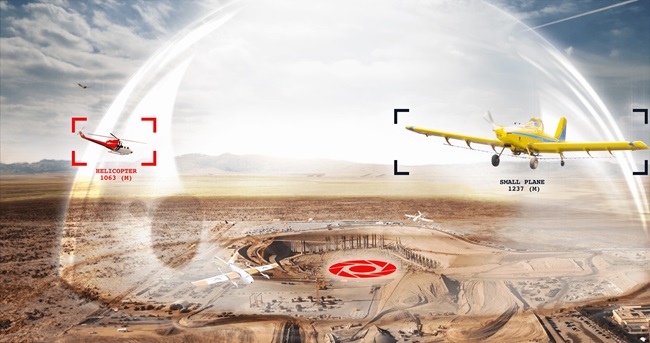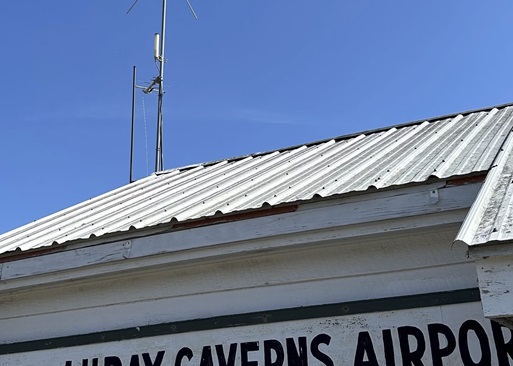ADS-B: Three months to go
With the FAA mandate upon us, a lot is happening

The FAA will require ADS-B Out for flights after January 1 in the airspace defined by FAR 91.225, generally where a transponder is required today. A key technology behind the agency’s Next Generation Air Transportation System, ADS-B uses GPS satellites to determine an aircraft’s position, and then broadcasts it to FAA ground stations and directly to equipped aircraft. Optional traffic and weather information from ADS-B ground stations can significantly increase a pilot’s situational awareness.
A lot of aircraft owners have already equipped, and more of you will in the months (and years) ahead. Many owners are choosing to make other panel upgrades in conjunction with ADS-B equipage, but please understand that while compliance with the mandate isn’t free, ADS-B Out equipage alone for a piston single should not cost you $30,000.
Yesterday I received an email from the owner of a 2002 Cessna 182T in Southern California who received multiple ADS-B installation quotes for $30,000—each specifying a Garmin GTN 750 WAAS GPS navigator and a Garmin GTX 345 ADS-B Out/In transponder. A Piper Cherokee owner in the Southeast got a similar “ADS-B quote” for $35,000—the market value of his airplane. Sure, the 750 and 345 are a great combo, but not for owners who don’t need WAAS GPS navigation and aren’t interested in optional ADS-B In data. Reputable shops should be able to offer you rule-compliant ADS-B Out-only options for $2,500 to $5,000 (ask about the Appareo Stratus ESG, Garmin GTX 335 or GDL 82, and the uAvionix skyBeacon); avionics shops that engage in predatory quoting for basic ADS-B Out requests are disingenuous and should not be patronized.
Policy updates
The FAA published a policy statement July 3 clarifying that aircraft operators encountering GPS interference will not be held responsible for resulting GPS performance failures that degrade ADS-B performance. Many pilots have been asking about this. General aviation operators are not required to conduct preflight service predictions for ADS-B because their position sources are WAAS-compliant, said Rune Duke, AOPA senior director of airspace and air traffic. Certain commercial operators must do so before flight, using the FAA’s Service Availability Prediction Tool.
A rule that took effect July 18 allows some aircraft to turn off ADS-B Out equipment under certain circumstances. In particular, the non-lead aircraft in a formation may turn off their transponders and ADS-B. AOPA and other participants in a government/industry ADS-B Formation Working Group had pressed the FAA for an exception to current regulations that require ADS-B- and transponder-equipped aircraft to operate the equipment at all times. The change represents “a big win and a major step forward,” Duke said.
The same rule allows aircraft flying sensitive federal, state, and local security and law enforcement missions to disable their ADS-B Out transmissions.
Although another recent AOPA effort clarified that pilots of aircraft equipped with 978 MHz universal access transceiver (UAT) ADS-B Out systems can use their UAT’s anonymous mode when the pilot has filed a VFR flight plan and is not requesting air traffic services, privacy remains a concern of many pilots, Duke said, citing the results of a recent AOPA Aviation eBrief poll where half of respondents indicated concern about privacy because their identification is being transmitted over ADS-B.
The privacy problem is exacerbated by websites that allow the tracking of ADS-B Out-equipped aircraft, including those squawking the 1200 VFR transponder code, using their own ground stations and bypassing traditional FAA controls over radar data—and more change is needed, Duke explained. “Further modifications to ADS-B regulations and policy will encourage additional ADS-B equipage, as well as address the privacy concerns of thousands of aviators,” he said, adding that the long-term solution is encryption of ADS-B data at the source—the aircraft transmitter.
Other issues remain to be addressed by the FAA, including voluntary ADS-B equipage of aircraft not equipped with engine-driven electrical systems, and harmonizing regulations addressing inoperable transponder and ADS-B systems, Duke said.
Equipment options
Avionics manufacturers continue to innovate, introducing new products. Garmin’s GNX 375 WAAS GPS navigator, designed to easily replace legacy GPS navigators, also incorporates a 1090 MHz transponder with ADS-B Out and In capabilities. At $7,995 it’s far from the least expensive ADS-B Out solution, but if you want to add LPV and LNAV/VNAV instrument approach capability and ADS-B In, the unit provides remarkable value.
uAvionix, manufacturer of the wingtip-mounted skyBeacon 978 MHz UAT, announced in July that it has received FAA technical standard order (TSO) authorization for its tailBeacon integrated rear position light and ADS-B Out solution. At press time, the company was awaiting supplemental type certificate approval to authorize tailBeacon installations. The tailBeacon is designed for ease of installation and the company expects the task to take less than one hour, including paperwork.
In addition, uAvionix is testing skyBeacon X, a wingtip-mounted 1090-MHz Mode S ADS-B Out transponder and LED position light designed to meet the update rate required by a satellite-based global ADS-B air traffic surveillance system, and the ADS-B antenna diversity requirement—meaning a transponder antenna on both the belly and top of the aircraft—established by Canadian air navigation services provider Nav Canada.
Nav Canada, an owner of the Aireon space-based ADS-B system, surprised the general aviation community earlier this year with its first-of-its-kind requirement for antenna diversity. It will require antenna-diversity, 1090ES ADS-B Out equipage beginning February 25, 2021, at and above Flight Level 180; on January 27, 2022, that ceiling drops to 12,500 feet. No earlier than January 1, 2023, Nav Canada will add lower “Class C, D, and E airspace as required.”
email [email protected]



